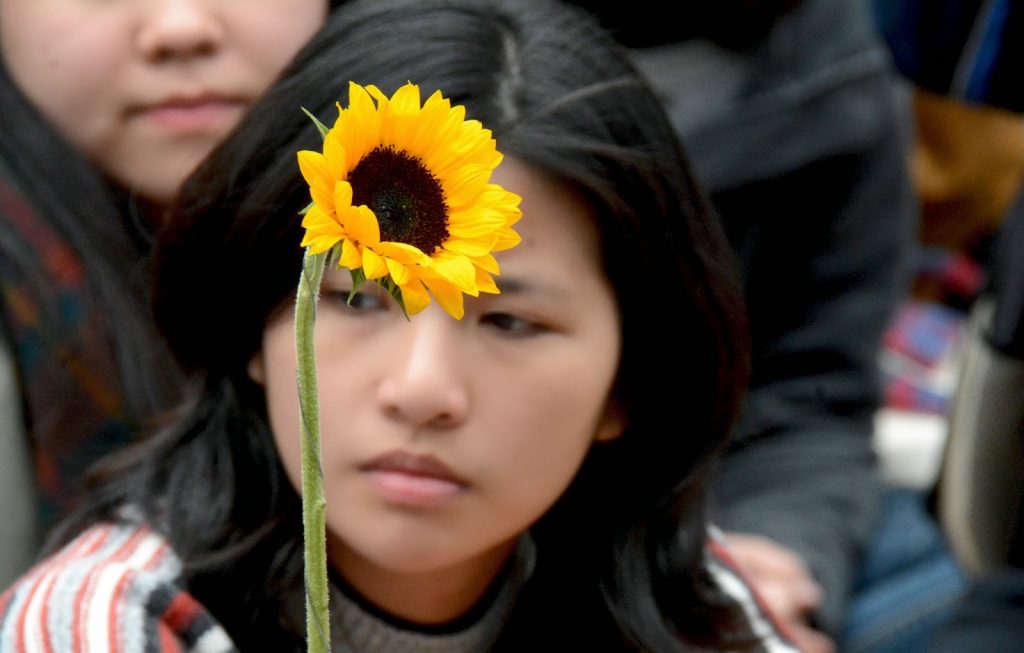China must look with uneasiness at the development in Taiwan. China has taken economic integration as a strategy to win Taiwan’s hearts. The occupation shows that the current strategy does not work and illustrates what would happen if China moves too fast forward with the wrong friends. China could change the strategy by trying to embrace a wider audience in Taiwan. The strategy to win Taiwan’s heart is dynamic.
By Michael Danielsen, chairman of Taiwan Corner
Taiwan’s vibrant democracy has taken unorthodox methods in use against a trade agreement between Taiwan and China. It is not routine that 200 students occupy Taiwan’s parliament for a little more than three weeks and appear to be able to alter the legislation that regulates agreements between Taiwan and China. It appears now that future agreements between Taiwan and China will be subject to higher scrutiny and an improved transparency. The details are not yet finalized.
In addition to the occupation, thousands gathered peacefully in front of the parliament and 350,000 demonstrators participated in rally in support of the occupation. The political consequences were revealed in a recent poll from April stating that the main opposition party DPP enjoys a much stronger support than before despite the student neutrality in regards to political parties. The Taiwanese seems to support the occupation as the pro-KMT media TVBS reveals. On April 9, 55 % see the youth as a part of the political center, and 65% believe that their movement supports democracy while only 26% take the opposite view.
These events stand in stark contrast to the past 6 years rosy descriptions of the peaceful development between Taiwan and China. For many years, many media have been silent about the concerns of the Taiwanese. These concerns focus on the very close relationship between Taiwan and China and lack of transparency in the negotiations. For the media, the numerous trade agreements between Taiwan and China appear to have provided sufficient evidence for the popular support trade agreements.

In front of the parliament. Photo credit: J. Michael Cole, Far-Eastern Sweet Potato.
The spark that ignited the events was a breach of an agreement to review the latest trade agreement article by article. The trade agreement has been stalled in the parliament since it was signed in June 2013. Even members of the ruling party, the Chinese Nationalist Party (KMT), are lacking enthusiasm for the agreement. The agreement is about the service industry and it is called the Cross-Strait Service Trade Agreement (CSSTA) or the Trade in Services Agreement (TiSA). It differs from the other agreements by going closer to the Taiwanese daily life. It also comes at a time in Taiwan when the Taiwanese are uncertain about the economy and when young people have a hard time finding work and salaries are low for the youth.
KMT stresses that the agreement gives Taiwan’s service industry access to 80 product lines in China while China will have access to 64 in Taiwan. In addition, Taiwan has managed to get the financial services industry included in the agreement to much acclaim in the banking industry. Calculations show that the agreement could create 11,000 new jobs in the service industry over the next 10 years.Critics emphasizes that the agreement allows Chinese to open laundries, hairdressers, restaurants and other service companies in Taiwan with fewer restrictions than seen in other international agreements. Others point out that Chinese banks, and Chinese institutions, can hold up to 20% of similar Taiwanese companies and that it gives no improvement in arbitration. In addition, the agreement makes Taiwan even more dependent on China, which already sends 40% of its exports to China. The sheer size of China’s financial industry means that the agreement is strengthening China’s ambitions to get Taiwan into the Chinese family.
The students who occupied the parliament required new legislation with far greater transparency when it comes to handling trade agreements between Taiwan and China, and that the ratification of CSSTA is paused until the new legislation is in place. The speaker of parliament, Wang, from the KMT, promised the students that he would initiate new legislation and pause the ratification. This ended the occupation.
After these events, the government negotiators can no longer blindly count an easy approval in the parliament as it has happened previously. As in the past, the Taiwanese have reacted when their politicians get too close to China and they now have another warning. Over 80% of the Taiwanese do not want China’s offer of a country-two systems. However, it is important to emphasize that the students are not against trade with China but want a more transparency.
President Ma is the big loser. The president has simply failed to come forward with initiatives that solve the conflict. During the occupation, he maintained that the agreement is good for Taiwan and that the students have misunderstood the trade agreement. He now appears as the loser with a popularity of 9%.

The Sunflower movement has ended its occupation of the parliament. Photo credit: J. Michael Cole, Far-Eastern Sweet Potato
The biggest winners are the many young people who managed peacefully to bring Taiwan’s vibrant democracy forward and at the same time stay independent of political parties. Compromise and dialogue are not a big part of Taiwan’s political scene but politicians now have the possibility of changing the culture.
China must look with uneasiness at the development in Taiwan. China has taken economic integration as a strategy to win Taiwan’s hearts. The occupation shows that the current strategy does not work and illustrates what would happen if China moves too fast forward with the wrong friends. China could change the strategy by trying to embrace a wider audience in Taiwan. The strategy to win Taiwan’s heart is dynamic.





